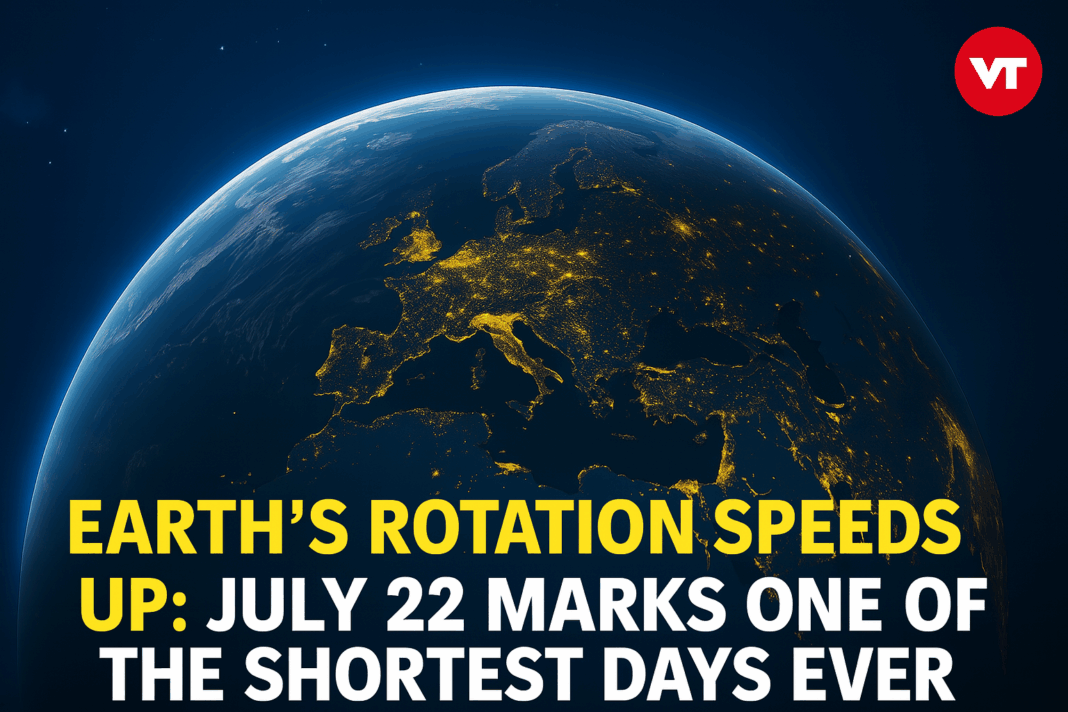- • July 22 will be 1.34 milliseconds shorter than a standard 24-hour day.
- • Earth’s rotation has sped up unexpectedly in recent years.
- • Scientists warn a “negative leap second” may be needed by 2029.
On Tuesday, July 22, Earth will complete a full rotation in 1.34 milliseconds less than the standard 24 hours — marking one of the shortest days ever recorded, according to Timeanddate.com. Though imperceptible to humans, the shift reflects a baffling acceleration in Earth’s spin observed in recent years.
If the pattern continues, scientists warn that atomic clocks may need an unprecedented adjustment by 2029: a so-called “negative leap second”, where a second would be subtracted from official timekeeping systems to account for the faster rotation.
Spinning Faster: A New Chapter in Earth’s Rhythms
Earth’s rotation rate is not fixed. In its early history, days were just about 19 hours long — significantly shorter than the 86,400 seconds we know today. This was due to a dynamic balance between solar atmospheric tides and lunar ocean tides. Over billions of years, tidal friction from the moon has slowed Earth’s spin while causing the moon to drift farther away.
But since the invention of the atomic clock in 1973, scientists have closely monitored fluctuations in Earth’s rotation. Until 2020, the record for the shortest day stood at 1.05 milliseconds shorter than 24 hours. Then, Earth began shattering its own records. The shortest day ever measured came on July 5, 2024, clocking in at 1.66 milliseconds under the standard day.
What’s Causing the Shift?
Theories abound, but none are conclusive. Some scientists point to the redistribution of Earth’s mass due to climate-driven changes. A 2024 study in Nature argued that melting polar ice and sea level rise may be subtly moderating — not driving — the acceleration.
A more likely source may lie much deeper beneath the surface. The slowing of Earth’s liquid inner core, scientists suspect, could be redistributing angular momentum in a way that accelerates the crust and mantle slightly.
When Will It Slow Again?
Looking ahead, predictions suggested that July 9, July 22, and August 5 could be among 2025’s shortest days. But new data shows that July 10 took the lead at 1.36 milliseconds shorter than average. Earth’s spin on July 22 is expected to fall just behind that, with August 5 potentially shortening the day by around 1.25 milliseconds.
There are signs, however, that the trend may be reversing. The rate of acceleration appears to be easing, which supports Zotov’s hypothesis that this might be a brief anomaly in Earth’s long-term journey toward slower rotation and longer days.
Scientists continue to monitor the changes closely — not just for curiosity, but for the potential consequences on GPS systems, satellites, and atomic timekeeping worldwide.
Follow Virginia Times for regular news updates. Stay informed with the latest headlines, breaking stories, and in-depth reporting from around the world.
A global media for the latest news, entertainment, music fashion, and more.















